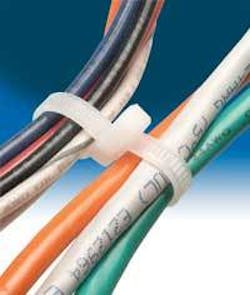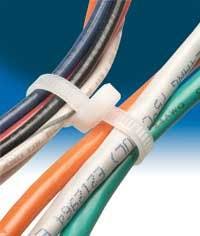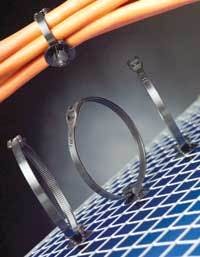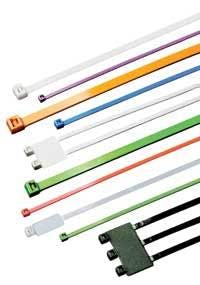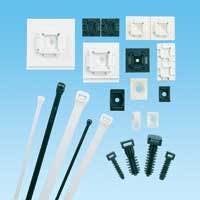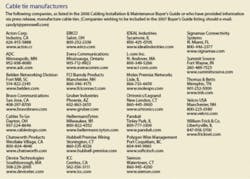How to save a bundle: Not just any old cable tie
Where you use it, what you’re fastening, and how the environment comes into play are all keys to selecting the right tie.
Cable ties, when invented and introduced by Thomas & Betts in 1958, provided a dependable, quick and easy method of bundling and fastening wire and cable in the aerospace industry. Since then, however, the development of cable ties has been driven by new applications beyond aerospace, as well as demand for better ergonomics, labor and cost savings, and improved performance capabilities. These developments over the last 48 years have created a variety of cable tie choices designed to provide an optimum solution for any bundling application.
Application drives the selection
Your application’s environment, such as whether it is indoors or outdoors, its temperature, and the presence of moisture or chemicals, will determine your choice of cable tie material. Additionally, what the cable tie must bundle will determine its length and the tensile strength required.
Cable ties can be classified as either one-piece or two-piece construction:
One-piece cable ties typically have a plastic locking device molded into the head of the tie. The locking device ratchets the notched strap to tighten and lock. This design has a lower cost of manufacturing and is used for general-purpose applications.Two-piece cable ties consist of a stainless-steel locking device embedded into the head of the tie, and a smooth locking strap. This design offers high tensile strength, and resistance to mechanical and environmental stress for applications that demand greater performance than what a general purpose cable tie offers. The smooth, infinitely adjustable strap also allows for the exact bundled tightness. The head of the two-piece cable tie engages the strap when installed, and permanently locks in place. In addition, the two-piece design has a lower profile and smoother cross-section, and is more resistant to brittleness and breakage in harsh environments because the uniform cross-section distributes stress across the strap more evenly than with one-piece cable ties. It is particularly appropriate for harsh conditions, such as ultraviolet exposure, extreme temperature, and exposure to moisture or chemicals, as well as for applications where retrofitting is not an option.